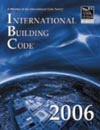| DOOR. A panel or
barrier, usually hinged or sliding, that is used to
cover an opening in a wall or partition giving onto
a building or space. A door can be opened to give access
and closed more or less securely. The term door is also
applied to the opening itself, more properly known as
the doorway.
Doors are nearly universal in buildings of all kinds, allowing passage between the inside and outside, and between internal rooms. When open, they admit ventilation and light. The purpose of a door closure is primarily to give occupants of a space privacy and security by regulating access. For this purpose doors are equipped with a variety of fittings ranging from simple latches to locks. The door is used to control the physical atmosphere within a space by enclosing it, excluding air drafts, so that interiors may be more effectively heated or cooled. Doors are significant in preventing the spread of fire. Doors also have an aesthetic role in creating an impression of what lies beyond. They are also used to screen areas of a building for aesthetic purposes, keeping formal and utility areas separate. They act as a barrier to noise. Doors are often symbolically endowed with ritual purposes, and the guarding or receiving of the keys to a door, or being granted access to a door can have special significance. Similarly, doors and doorways frequently appear in metaphorical or allegorical situations, literature and the arts, often as a portent of change. When framed in wood for snug fitting of a door, the doorway consists of two vertical jambs on either side, a lintel or head jamb at the top, and perhaps a threshold at the bottom. When a door has more than one movable panel, one of the panels may be called a leaf.
|

